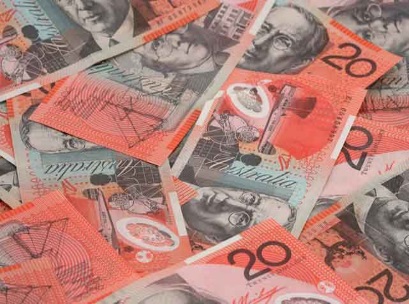 The Australian dollar has risen Monday, buying 72.49 US cents from Friday’s 72.39 US cents.
The Australian dollar has risen Monday, buying 72.49 US cents from Friday’s 72.39 US cents.
Last week, the local currency has held hefty gains after its US counterpart was scuppered by a surprisingly dovish turn from the Federal Reserve, which also boosted bonds world wide.
There was also relief when the latest surveys from China showed some improvement, with a measure of the services sector markedly stronger in January.
The Aussie dollar had levelled out at 72.56 US cents, after climbing 1.3 per cent on Wednesday.
The rally also took out major chart resistance at 72.35 US cents, which should now provide technical support.
The main gains came after the Fed dropped any reference to further rate increases in its latest policy statement, just a month after re-committing to more hikes.
“The language changes to the statement were very dovish,” said Michelle Girard, chief US economist at RBS.
“The changes and the tone of the Fed Chair’s press conference suggest additional rate hikes this year may no longer be the base case.
“It suggested no predisposition as to the direction of the next move in interest rates.”
Short-term Treasury yields fell sharply in response, dragging the US dollar down broadly.
Australian bonds got a smaller boost, with three-year futures up 1.5 ticks at 98.275.
The 10-year contract edged up one tick to 97.7700.
The local bond market had sold off on Wednesday when data showed inflation last quarter had not been as soft as some had wagered on, lengthening the odds on a cut in interest rates.
Futures currently imply around a 54 per cent chance of a quarter-point cut in the cash rate by year-end, compared with 70 per cent before the data.
The Reserve Bank of Australia holds its first policy meeting of the year on February 5 and there has been speculation it would also take a dovish turn, perhaps tempering a long-held view that the next move in rates would be upward.
Data on Thursday was too mixed to offer much guidance.
Private-sector lending was again weak as banks tighten standards and an ongoing slide in home prices discourage investors.
Yet figures also showed a healthy rise in prices for Australia’s major exports last quarter, which would have lifted company profits and tax receipts.
“Trade prices are important as they provide a partial reading on how strong income growth has been in the economy,” said CBA economist Kristina Clifton.
“We are likely to see solid nominal GDP growth in Q4.”
Access exclusive analysis, locked news and reports with Inside Retail Weekly. Subscribe today and get our premium print publication delivered to your door every week.





